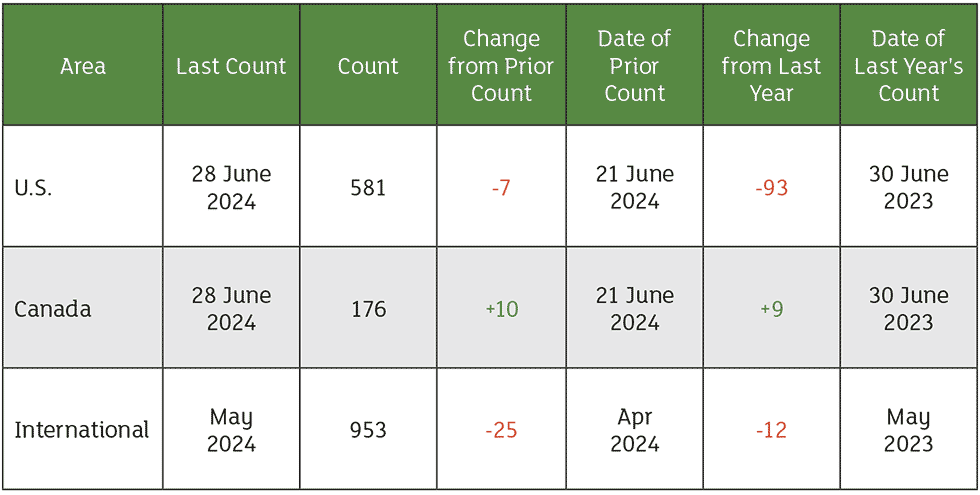
In May, the Consumer Price Index for All Urban Consumers (CPI-U) remained unchanged on a seasonally adjusted basis, following a 0.3% rise in April. Over the past year, the all items index increased by 3.3% before seasonal adjustment. The shelter index rose by 0.4% in May, marking its fourth consecutive monthly increase, which offset a decline in gasoline prices. The food index increased by 0.1%, with the food away from home index rising by 0.4% and the food at home index remaining unchanged. The energy index dropped by 2%, driven by a 3.6% decrease in gasoline prices.
In May, the total nonfarm payroll employment increased by 272,000, while the unemployment rate remained steady at 4.0%, as reported by the United States Bureau of Labor Statistics. Health care added 68,000 jobs, government employment rose by 43,000 and leisure and hospitality saw an increase of 42,000 jobs. Revisions for March and April employment figures resulted in a net decrease of 15,000 jobs from previously reported numbers.
The Producer Price Index (PPI) for final demand decreased by 0.2% in May, following a 0.5% increase in April and a 0.1% decrease in March. On an unadjusted basis, the final demand index rose by 2.2% over the past year. The decline in May was primarily due to a 0.8% drop in prices for final demand goods, while prices for final demand services remained unchanged. Excluding foods, energy and trade services, final demand prices were also unchanged in May, following a 0.5% increase in April, with a 12-month increase of 3.2%.

U.S. import prices fell by 0.4%, following a 0.9% increase in April, driven by decreases in both fuel and nonfuel import prices. This marked the first monthly drop since December 2023. Over the past year, import prices rose by 1.1%, maintaining the same rate as in April. Fuel import prices declined by 2% in May, with drops in petroleum and natural gas prices. Nonfuel import prices also decreased by 0.3%, influenced by lower prices for foods, feeds, beverages, nonfuel industrial supplies, consumer goods, capital goods and automotive vehicles. Notably, food prices saw the largest monthly decrease since November 2020, led by declines in vegetable and fruit prices. Finished goods import prices also fell across all major categories, with consumer goods, capital goods and automotive vehicles all experiencing price declines.
U.S. export prices saw a 0.6% decline in May following a previous 0.6% increase, marking the first monthly decrease since December 2023. Lower prices for nonagricultural exports outweighed higher agricultural prices, with agricultural export prices rising by 0.5% driven by increases in wheat, fruit, corn and meat prices. Nonagricultural export prices fell by 0.8%, primarily due to lower industrial supplies and materials prices. Despite these declines, nonagricultural export prices rose 1.5% over the past year, led by gains in capital goods and consumer goods prices.
In the first quarter of 2024, nonfarm business sector labor productivity in the U.S. rose by 0.2%, driven by a 0.9% increase in output and a 0.6% rise in hours worked. Over the preceding year, productivity grew by 2.9%, marking the largest annual increase since the first quarter of 2021. Unit labor costs saw a sharper increase of 4%, influenced by a 4.2% rise in hourly compensation alongside the slight productivity gain. Real hourly compensation, adjusted for inflation, showed a moderate increase of 0.4% for the quarter and 0.6% over the past year. Manufacturing sector productivity remained unchanged overall, with notable variations in durable and nondurable manufacturing segments.

